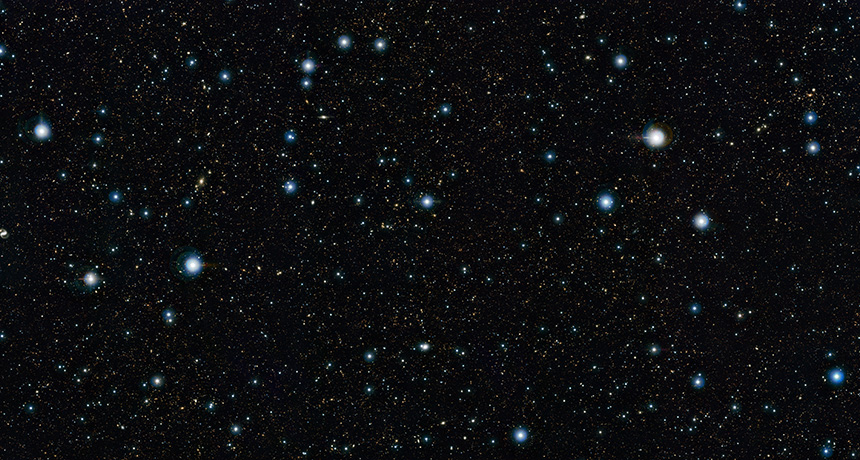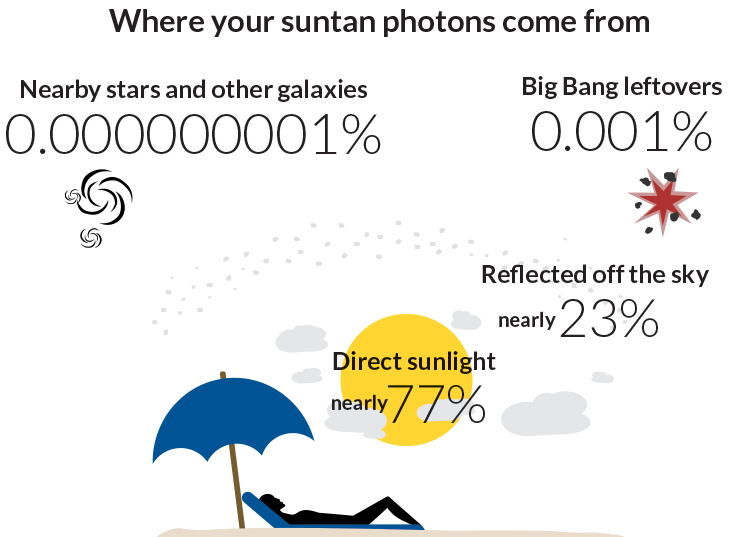The sun isn’t the only light source behind that summer tan
Tiny amount of ultraviolet light comes from the Big Bang and other stars, galaxies

CATCHING SOME GALACTIC RAYS Galaxies, such as those in this image from the Paranal Observatory in Chile, are responsible for less than one-billionth of 1 percent of your suntan. The bright blue-white points of light in this picture are stars in the Milky Way; most other objects are galaxies.
ESO/UltraVISTA team








